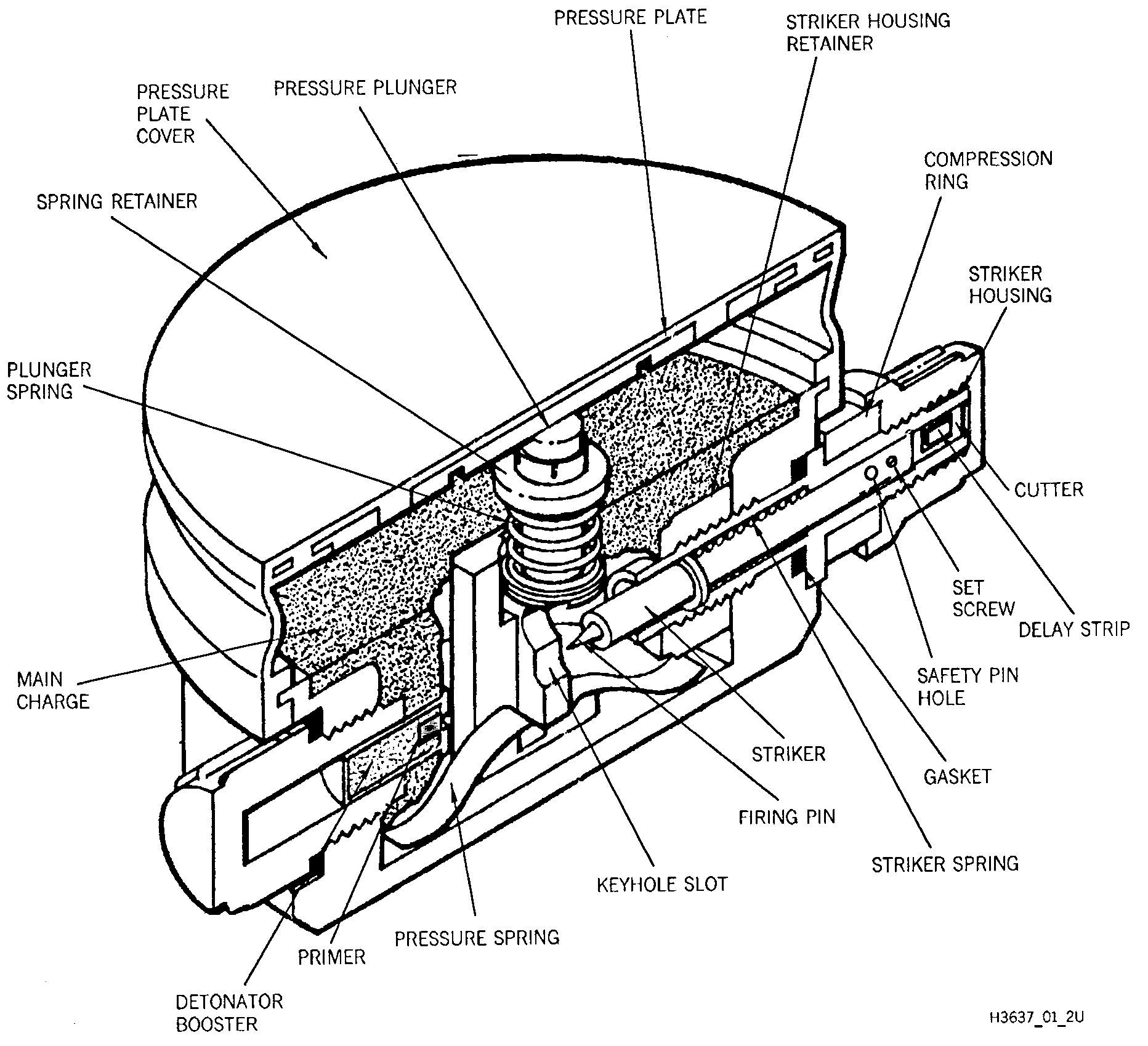GYATA-64 mine on:
[Wikipedia]
[Google]
[Amazon]
 The GYATA-64 is a Hungarian
The GYATA-64 is a Hungarian
Gyata-64 mine #1
Demining incident involving a Gyata-64 mine
Anti-personnel mines Land mines of Hungary {{Landmine-stub
 The GYATA-64 is a Hungarian
The GYATA-64 is a Hungarian antipersonnel mine
Anti-personnel mines are a form of mine designed for use against humans, as opposed to anti-tank mines, which are designed for use against vehicles. Anti-personnel mines may be classified into blast mines or fragmentation mines; the latter ma ...
, very similar to the Russian PMN mine
The PMN () series of blast anti-personnel mines were designed and manufactured in the Soviet Union. They are one of the most widely used and commonly found devices during demining operations. They are sometimes nicknamed "black widow" because of ...
in design and appearance. However, the Gyata-64 mine has a 300 gram explosive charge compared with the 249 gram charge in a PMN mine. As a result, the Gyata-64 is the most powerful AP blast mine commonly encountered, for which reason it is particularly deadly.
To put things in perspective, most anti-personnel blast mines (e.g. the VS-50
VS-50 (suborbital rocket VS-50) is a joint development of sounding rocket from the Institute of Aeronautics and Space (IAE) and German Aerospace Center (DLR).
Characteristics
It is a suborbital vehicle that uses solid fuel, having two stages: ...
) contain around 50 grams of explosive, which is enough to destroy all or part of a victim's foot. In marked contrast, the 300 gram charge inside a Gyata-64 mine can easily destroy a victim's entire leg (often requiring amputation high above the knee) in addition to inflicting severe injuries on the adjacent limb, which may also require some form of amputation.
The Gyata-64 mine is cylindrical with a plastic body and a black rubber pressure cap. The fuze protrudes from either side of the mine. Although the body is plastic, the fuze itself contains a steel striker and spring, which make it detectable by conventional mine detectors. It is not a blast resistant mine
A Blast resistant mine is a landmine (intended for anti-tank or anti-personnel purposes) with a fuze which is designed to be insensitive to the shock wave from a nearby explosion. This feature makes it difficult or impossible to clear such mines ...
.
Hungary ceased production of all antipersonnel mines before 1995 and by 1998 had destroyed its stock pile of 149,686 GYATA-64 mines. Approximately 1,500 were retained for training and research as of 2004. Legacy stockpiles may exist in some foreign countries, in addition to those already planted in existing minefields. Examples have been found in Mozambique
Mozambique (), officially the Republic of Mozambique ( pt, Moçambique or , ; ny, Mozambiki; sw, Msumbiji; ts, Muzambhiki), is a country located in southeastern Africa bordered by the Indian Ocean to the east, Tanzania to the north, Malawi ...
, Angola
, national_anthem = " Angola Avante"()
, image_map =
, map_caption =
, capital = Luanda
, religion =
, religion_year = 2020
, religion_ref =
, coordina ...
, Lebanon
Lebanon ( , ar, لُبْنَان, translit=lubnān, ), officially the Republic of Lebanon () or the Lebanese Republic, is a country in Western Asia. It is located between Syria to Lebanon–Syria border, the north and east and Israel to Blue ...
and Yemen
Yemen (; ar, ٱلْيَمَن, al-Yaman), officially the Republic of Yemen,, ) is a country in Western Asia. It is situated on the southern end of the Arabian Peninsula, and borders Saudi Arabia to the Saudi Arabia–Yemen border, north and ...
.
The render safe procedure
The render safe procedure (RSP) is the portion of the explosive ordnance disposal procedures involving the application of special explosive ordnance disposal procedures, methods and tools to provide the interruption of functions or separation of es ...
s are the same as those used for the PMN mine.
Specifications
* Height: 61 mm * Diameter: 106 mm * Weight: 520 g * Explosive charge: 300 gTNT
Trinitrotoluene (), more commonly known as TNT, more specifically 2,4,6-trinitrotoluene, and by its preferred IUPAC name 2-methyl-1,3,5-trinitrobenzene, is a chemical compound with the formula C6H2(NO2)3CH3. TNT is occasionally used as a reagen ...
References
External links
*Gyata-64 mine #1
Demining incident involving a Gyata-64 mine
Anti-personnel mines Land mines of Hungary {{Landmine-stub